The reaction between sodium thiosulfate and hydrochloric acid is a well-known chemical reaction that is frequently used in school laboratories to study reaction rates. This reaction produces a precipitate of sulfur, which gradually turns the solution cloudy. Due to its visible nature, it is an excellent experiment for investigating the effect of concentration on reaction rate.
When clear solutions of sodium thiosulfate (Na₂S₂O₃) and hydrochloric acid (HCl) mix a fascinating transformation occurs. Initially, the mixture remains transparent, then slowly, it turns cloudy and opaque. This visual change is due to the formation of solid sulfur (S), which precipitates out of the solution. The balanced chemical equation for the reaction is:
Chemical Equation and Reaction Mechanism
The “disappearing cross” experiment, involving sodium thiosulfate and hydrochloric acid, illustrates how concentration and temperature affect reaction rates. This is observed by forming a sulfur precipitate, which gradually obscures a cross placed beneath the reaction flask.
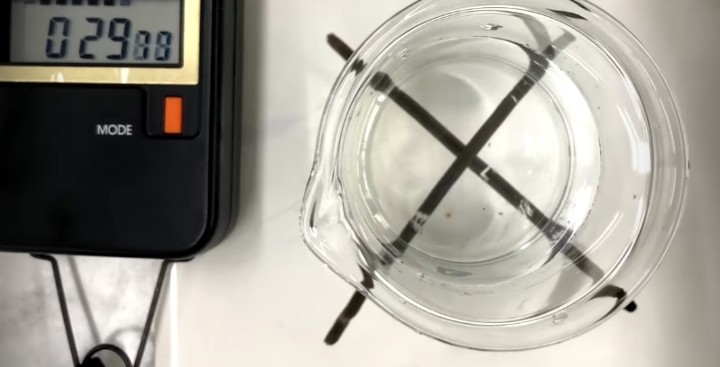
The reaction between sodium thiosulfate (Na₂S₂O₃) and hydrochloric acid (HCl) proceeds as follows:
Na₂S₂O₃(aq) + 2HCl(aq) → 2NaCl(aq) + S(s) + SO₂(g) + H₂O(l)
Reaction Products:
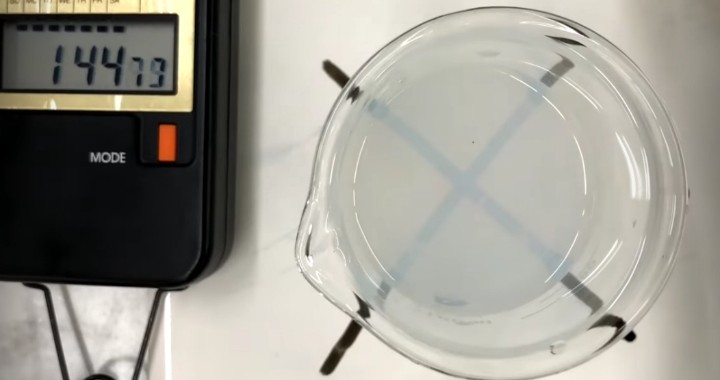
- Sulfur (S) – A yellow precipitate that makes the solution cloudy.
- Sulfur dioxide (SO₂) – A pungent gas that dissolves in water.
- Sodium chloride (NaCl) – A salt that remains dissolved in the solution.
- Water (H₂O) – A product of neutralization.
Experimental Procedure
The rate of reaction between sodium thiosulfate and hydrochloric acid.
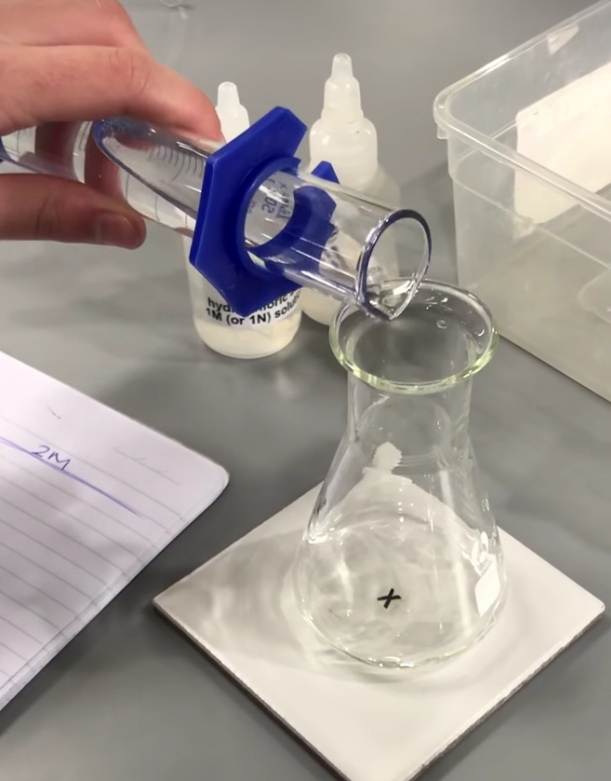
Materials Required:
- Thermometer (optional)
- Sodium thiosulfate solution
- Hydrochloric acid
- Distilled water
- Measuring cylinders
- Conical flask
- Stopwatch
- A black cross drawn on paper
Step-by-Step Procedure:
- Measure a fixed volume (e.g., 50 cm³) of sodium thiosulfate solution using a measuring.
- Position the conical flask on a sheet of paper marked with a visible black cross.
- Add a fixed volume (e.g., 10 cm³) of dilute hydrochloric acid to the flask and start the stopwatch immediately.
- Observe the black cross through the solution. As sulfur precipitate forms, the solution will become increasingly cloudy.
- Stop the timer when the black cross disappears..
- Record the time taken for the reaction to obscure the cross completely.
- Perform multiple trials of the experiment, altering the concentration of sodium thiosulfate while maintaining a constant volume of hydrochloric acid.
Factors Affecting the Reaction Rate
The reaction between sodium thiosulfate and hydrochloric acid.
1. Concentration of Sodium Thiosulfate
- Increasing the concentration of sodium thiosulfate leads to a faster reaction rate because more reactant molecules are available to collide and react.
- A higher concentration results in a shorter reaction time, making the cross disappear more quickly.
2. Temperature
- An increase in temperature boosts the kinetic energy of reacting particles, resulting in more frequent and forceful collisions, which accelerate the reaction rate.
- Increasing the temperature speeds up the reaction, causing the black cross to disappear in a shorter amount of time.
3. Volume of Hydrochloric Acid
- Keeping the volume of hydrochloric acid constant ensures that it does not affect the reaction rate independently.
4. Surface Area
- Since both reactants are in solution, surface area does not play a role in this reaction.
- Although this reaction does not typically involve a catalyst, in general, catalysts work by providing an alternative reaction pathway with lower activation energy.
5. Stirring
- Stirring helps distribute reactants evenly, ensuring consistent reaction conditions and potentially increasing the rate of reaction.
Graphical Representation of Results
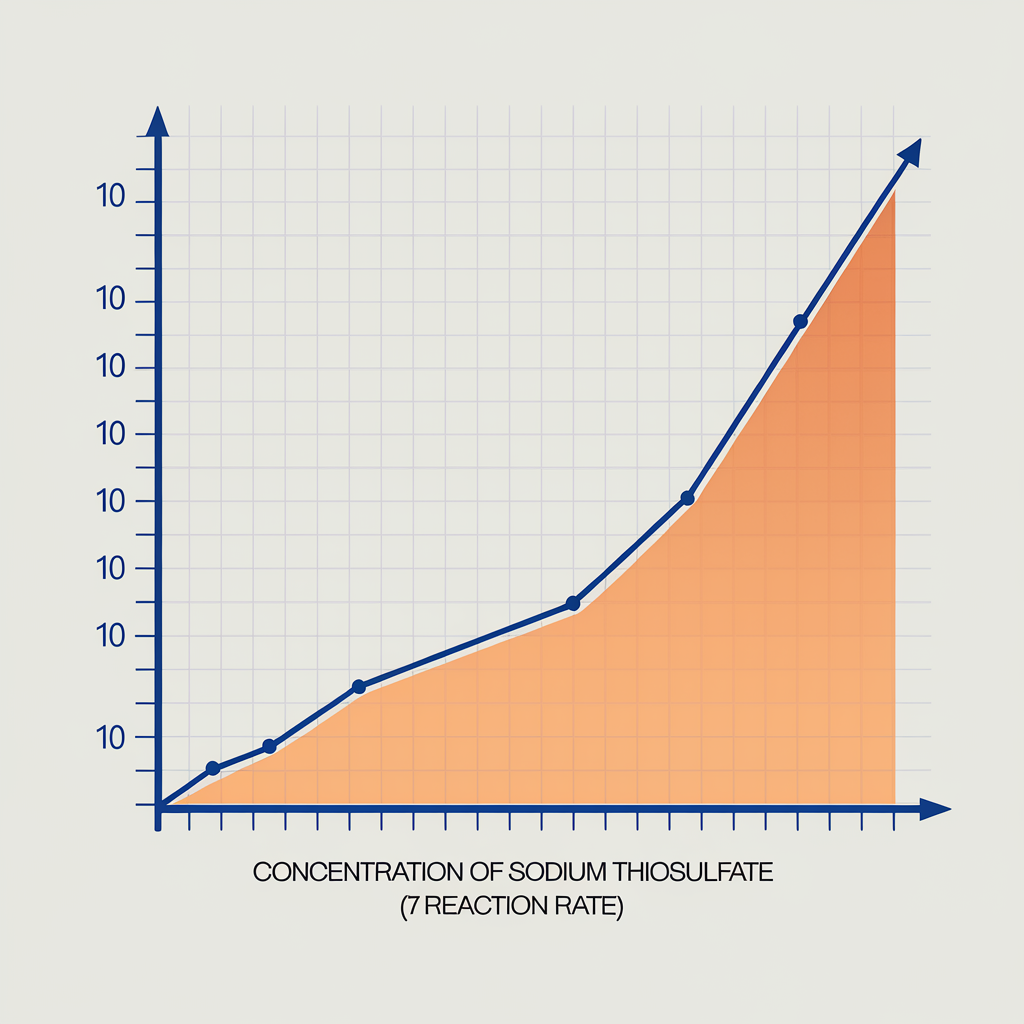
A graph of 1/time (reaction rate) vs. concentration of sodium thiosulfate typically produces a straight-line relationship, indicating a direct correlation between concentration and rate of reaction.
Data Analysis:
- Plotting concentration vs. reaction time (or its inverse, rate) can provide a clear visual representation of how concentration affects reaction rates.
- You may also calculate the reaction rate using the formula:
Rate =1/time
This experiment allows students to observe fundamental concepts in chemical kinetics and provides hands-on experience in handling chemical reactions and data collection.
Common Errors and How to Minimize Them
- Starting the stopwatch late: Always start the stopwatch immediately after adding hydrochloric acid.
- Subjectivity in endpoint detection: Use a consistent observer for all trials to reduce human error.
- Temperature fluctuations: Conduct all experiments at room temperature or use a water bath to maintain a constant temperature.
Applications of the Reaction
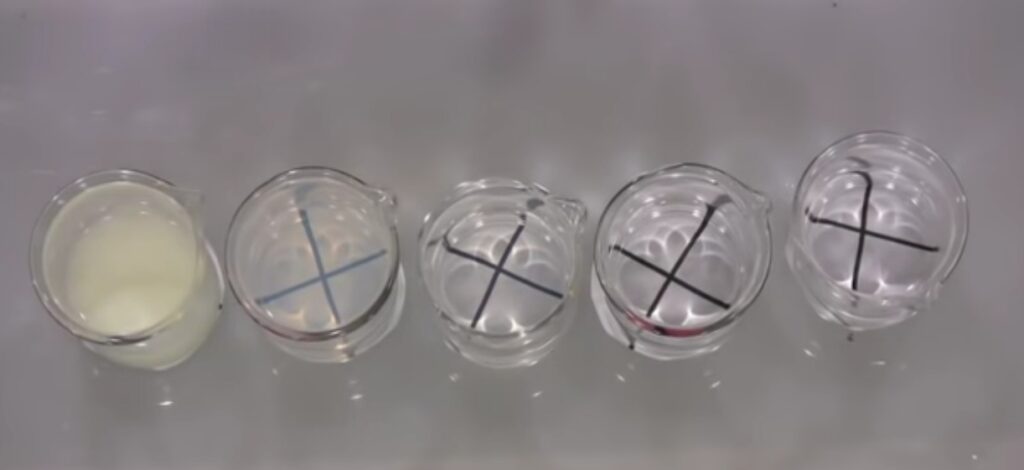
- Understanding reaction kinetics: This experiment helps in studying the effect of concentration and temperature on reaction rates.
- Industrial applications: The principles from this reaction apply to chemical manufacturing, where controlling reaction rates is crucial.
- Environmental studies: The reaction produces sulfur dioxide (SO₂), which is a contributor to acid rain.
Final thought
By adjusting the concentration of sodium thiosulfate, we can observe its direct impact on the time taken for the reaction between sodium thiosulfate and hydrochloric acid to complete. These insights are fundamental to various fields, such as industrial chemistry and environmental science.
The sodium thiosulfate and hydrochloric acid reaction is more than a visual spectacle, it’s a microcosm of how chemists decode the invisible forces governing reactions. By linking observable changes to molecular behavior, students gain a deeper appreciation for kinetics, equilibrium, and the scientific method itself. Whether in a school lab or an industrial plant, controlling reaction rates remains a pillar of chemical innovation, proving that even simple experiments can illuminate profound truths.
What is the reaction between sodium thiosulfate and hydrochloric acid?
Sodium thiosulfate and hydrochloric acid.
When clear solutions of sodium thiosulfate (Na₂S₂O₃) and hydrochloric acid (HCl) mix a fascinating transformation occurs. Initially, the mixture remains transparent, then slowly, it turns cloudy and opaque. This visual change is due to the formation of solid sulfur (S), which precipitates out of the solution. The balanced chemical equation for the reaction is:
Chemical Equation and Reaction Mechanism
The “disappearing cross” experiment, involving sodium thiosulfate and hydrochloric acid, illustrates how concentration and temperature affect reaction rates. This is observed by forming a sulfur precipitate, which gradually obscures a cross placed beneath the reaction flask.

The reaction between sodium thiosulfate (Na₂S₂O₃) and hydrochloric acid (HCl) proceeds as follows:
Na₂S₂O₃(aq) + 2HCl(aq) → 2NaCl(aq) + S(s) + SO₂(g) + H₂O(l)
Reaction Products:

Sulfur (S) – A yellow precipitate that makes the solution cloudy.
Sulfur dioxide (SO₂) – A pungent gas that dissolves in water.
Sodium chloride (NaCl) – A salt that remains dissolved in the solution.
Water (H₂O) – A product of neutralization.
Experimental Procedure
The rate of reaction between sodium thiosulfate and hydrochloric acid.

Sodium thiosulfate and hydrochloric acid.
Materials Required:
Thermometer (optional)
Sodium thiosulfate solution
Hydrochloric acid
Distilled water
Measuring cylinders
Conical flask
Stopwatch
Black cross drawn on paper
Step-by-Step Procedure:
Measure a fixed volume (e.g., 50 cm³) of sodium thiosulfate solution using a measuring.
Position the conical flask on a sheet of paper marked with a visible black cross.
Add a fixed volume (e.g., 10 cm³) of dilute hydrochloric acid to the flask and start the stopwatch immediately.
Observe the black cross through the solution. As sulfur precipitate forms, the solution will become increasingly cloudy.
Stop the timer when the black cross disappears.
Record the time taken for the reaction to obscure the cross completely.
Perform multiple trials of the experiment, altering the concentrate
tion of sodium thiosulfate while maintaining a constant volume of hydrochloric acid.
Factors Affecting the Reaction Rate
The reaction between sodium thiosulfate and hydrochloric acid.
1. Concentration of Sodium Thiosulfate
Increasing the concentration of sodium thiosulfate leads to a faster reaction rate because more reactant molecules are available to collide and react.
A higher concentration results in a shorter reaction time, making the cross disappear more quickly.
2. Temperature
An increase in temperature boosts the kinetic energy of reacting particles, resulting in more frequent and forceful collisions, which accelerates the reaction rate.
Increasing the temperature speeds up the reaction, causing the black cross to disappear in a shorter amount of time.
3. Volume of Hydrochloric Acid
Keeping the volume of hydrochloric acid constant ensures that it does not affect the reaction rate independently.
4. Surface Area
Since both reactants are in solution, surface area does not play a role in this reaction.
Although this reaction does not typically involve a catalyst, in general, catalysts work by providing an alternative reaction pathway with lower activation energy.
5. Stirring
Stirring helps distribute reactants evenly, ensuring consistent reaction conditions and potentially increasing the rate of reaction.
Graphical Representation of Results

A graph of 1/time (reaction rate) vs. concentration of sodium thiosulfate typically produces a straight-line relationship, indicating a direct correlation between concentration and rate of reaction.
Data Analysis:
Plotting concentration vs. reaction time (or its inverse, rate) can provide a clear visual representation of how concentration affects reaction rates.
You may also calculate the reaction rate using the formula:
Rate =1/time
This experiment allows students to observe fundamental concepts in chemical kinetics and provides hands-on experience in handling chemical reactions and data collection.
Sodium thiosulfate and hydrochloric acid
Common Errors and How to Minimize Them
Starting the stopwatch late: Always start the stopwatch immediately after adding hydrochloric acid.
Subjectivity in endpoint detection: Use a consistent observer for all trials to reduce human error.
Temperature fluctuations: Conduct all experiments at room temperature or use a water bath to maintain a constant temperature.
Applications of the Reaction

Understanding reaction kinetics: This experiment helps in studying the effect of concentration and temperature on reaction rates.
Industrial applications: The principles from this reaction apply to chemical manufacturing, where controlling reaction rates is crucial.
Environmental studies: The reaction produces sulfur dioxide (SO₂), which is a contributor to acid rain.
Final thought
By adjusting the concentration of sodium thiosulfate, we can observe its direct impact on the time taken for the reaction between sodium thiosulfate and hydrochloric acid to complete. These insights are fundamental to various fields, such as industrial chemistry and environmental science.
The sodium thiosulfate and hydrochloric acid reaction is more than a visual spectacle it’s a microcosm of how chemists decode the invisible forces governing reactions. By linking observable changes to molecular behavior, students gain a deeper appreciation for kinetics, equilibrium, and the scientific method itself. Whether in a school lab or an industrial plant, controlling reaction rates remains a pillar of chemical innovation, proving that even simple experiments can illuminate profound truths.
What happens when sodium thiosulfate and hydrochloric acid react together?
When clear solutions of sodium thiosulfate (Na₂S₂O₃) and hydrochloric acid (HCl) mix a fascinating transformation occurs. Initially, the mixture remains transparent, then slowly, it turns cloudy and opaque. This visual change is due to the formation of solid sulfur (S), which precipitates out of the solution.
What is the effect of the temperature of sodium thiosulfate and hydrochloric acid?
An increase in temperature boosts the kinetic energy of reacting particles, resulting in more frequent and forceful collisions, which accelerates the reaction rate.
Increasing the temperature speeds up the reaction, causing the black cross to disappear in a shorter amount of time.
Why do sodium thiosulfate and hydrochloric acid become cloudy?
The reaction between sodium thiosulfate (Na₂S₂O₃) and hydrochloric acid (HCl) proceeds as follows:
Na₂S₂O₃(aq) + 2HCl(aq) → 2NaCl(aq) + S(s) + SO₂(g) + H₂O(l)
Sulfur (S) – A yellow precipitate that makes the solution cloudy.
Sulfur dioxide (SO₂) – A pungent gas that dissolves in water.
Sodium chloride (NaCl) – A salt that remains dissolved in the solution.
Water (H₂O) – A product of neutralization.
What is the application of the reaction between sodium thiosulfate and hydrochloric acid?
Industrial applications: The principles from this reaction apply to chemical manufacturing, where controlling reaction rates is crucial.
Environmental studies: The reaction produces sulfur dioxide (SO₂), which is a contributor to acid rain.
Why are precipitates cloudy?
The “disappearing cross” experiment, involving sodium thiosulfate and hydrochloric acid, illustrates how concentration and temperature affect reaction rates. This is observed by forming a sulfur precipitate, which gradually obscures a cross placed beneath the reaction flask.
The reaction between sodium thiosulfate (Na₂S₂O₃) and hydrochloric acid (HCl) proceeds as follows:
Na₂S₂O₃(aq) + 2HCl(aq) → 2NaCl(aq) + S(s) + SO₂(g) + H₂O(l)
Sulfur (S) – A yellow precipitate that makes the solution cloudy.
Sulfur dioxide (SO₂) – A pungent gas that dissolves in water.
Sodium chloride (NaCl) – A salt that remains dissolved in the solution.
Water (H₂O) – A product of neutralization.
Why does sodium thiosulfate give a colloidal precipitate in reaction with HCl?
Sodium thiosulfate and hydrochloric acid.
When clear solutions of sodium thiosulfate (Na₂S₂O₃) and hydrochloric acid (HCl) mix a fascinating transformation occurs. Initially, the mixture remains transparent, then slowly, it turns cloudy and opaque. This visual change is due to the formation of solid sulfur (S), which precipitates out of the solution. The balanced chemical equation for the reaction is:
Chemical Equation and Reaction Mechanism
The “disappearing cross” experiment, involving sodium thiosulfate and hydrochloric acid, illustrates how concentration and temperature affect reaction rates. This is observed by forming a sulfur precipitate, which gradually obscures a cross placed beneath the reaction flask.

The reaction between sodium thiosulfate (Na₂S₂O₃) and hydrochloric acid (HCl) proceeds as follows:
Na₂S₂O₃(aq) + 2HCl(aq) → 2NaCl(aq) + S(s) + SO₂(g) + H₂O(l)
Reaction Products:

Sulfur (S) – A yellow precipitate that makes the solution cloudy.
Sulfur dioxide (SO₂) – A pungent gas that dissolves in water.
Sodium chloride (NaCl) – A salt that remains dissolved in the solution.
Water (H₂O) – A product of neutralization.
Experimental Procedure
The rate of reaction between sodium thiosulfate and hydrochloric acid.

Sodium thiosulfate and hydrochloric acid.
Materials Required:
Thermometer (optional)
Sodium thiosulfate solution
Hydrochloric acid
Distilled water
Measuring cylinders
Conical flask
Stopwatch
Black cross drawn on paper
Step-by-Step Procedure:
Measure a fixed volume (e.g., 50 cm³) of sodium thiosulfate solution using a measuring.
Position the conical flask on a sheet of paper marked with a visible black cross.
Add a fixed volume (e.g., 10 cm³) of dilute hydrochloric acid to the flask and start the stopwatch immediately.
Observe the black cross through the solution. As sulfur precipitate forms, the solution will become increasingly cloudy.
Stop the timer when the black cross disappears.
Record the time taken for the reaction to obscure the cross completely.
Perform multiple trials of the experiment, altering the concentrate
tion of sodium thiosulfate while maintaining a constant volume of hydrochloric acid.
Factors Affecting the Reaction Rate
The reaction between sodium thiosulfate and hydrochloric acid.
1. Concentration of Sodium Thiosulfate
Increasing the concentration of sodium thiosulfate leads to a faster reaction rate because more reactant molecules are available to collide and react.
A higher concentration results in a shorter reaction time, making the cross disappear more quickly.
2. Temperature
An increase in temperature boosts the kinetic energy of reacting particles, resulting in more frequent and forceful collisions, which accelerates the reaction rate.
Increasing the temperature speeds up the reaction, causing the black cross to disappear in a shorter amount of time.
3. Volume of Hydrochloric Acid
Keeping the volume of hydrochloric acid constant ensures that it does not affect the reaction rate independently.
4. Surface Area
Since both reactants are in solution, surface area does not play a role in this reaction.
Although this reaction does not typically involve a catalyst, in general, catalysts work by providing an alternative reaction pathway with lower activation energy.
5. Stirring
Stirring helps distribute reactants evenly, ensuring consistent reaction conditions and potentially increasing the rate of reaction.
Graphical Representation of Results

A graph of 1/time (reaction rate) vs. concentration of sodium thiosulfate typically produces a straight-line relationship, indicating a direct correlation between concentration and rate of reaction.
Data Analysis:
Plotting concentration vs. reaction time (or its inverse, rate) can provide a clear visual representation of how concentration affects reaction rates.
You may also calculate the reaction rate using the formula:
Rate =1/time
This experiment allows students to observe fundamental concepts in chemical kinetics and provides hands-on experience in handling chemical reactions and data collection.
Sodium thiosulfate and hydrochloric acid
Common Errors and How to Minimize Them
Starting the stopwatch late: Always start the stopwatch immediately after adding hydrochloric acid.
Subjectivity in endpoint detection: Use a consistent observer for all trials to reduce human error.
Temperature fluctuations: Conduct all experiments at room temperature or use a water bath to maintain a constant temperature.
Applications of the Reaction

Understanding reaction kinetics: This experiment helps in studying the effect of concentration and temperature on reaction rates.
Industrial applications: The principles from this reaction apply to chemical manufacturing, where controlling reaction rates is crucial.
Environmental studies: The reaction produces sulfur dioxide (SO₂), which is a contributor to acid rain.
Final thought
By adjusting the concentration of sodium thiosulfate, we can observe its direct impact on the time taken for the reaction between sodium thiosulfate and hydrochloric acid to complete. These insights are fundamental to various fields, such as industrial chemistry and environmental science.
The sodium thiosulfate and hydrochloric acid reaction is more than a visual spectacle it’s a microcosm of how chemists decode the invisible forces governing reactions. By linking observable changes to molecular behavior, students gain a deeper appreciation for kinetics, equilibrium, and the scientific method itself. Whether in a school lab or an industrial plant, controlling reaction rates remains a pillar of chemical innovation, proving that even simple experiments can illuminate profound truths.
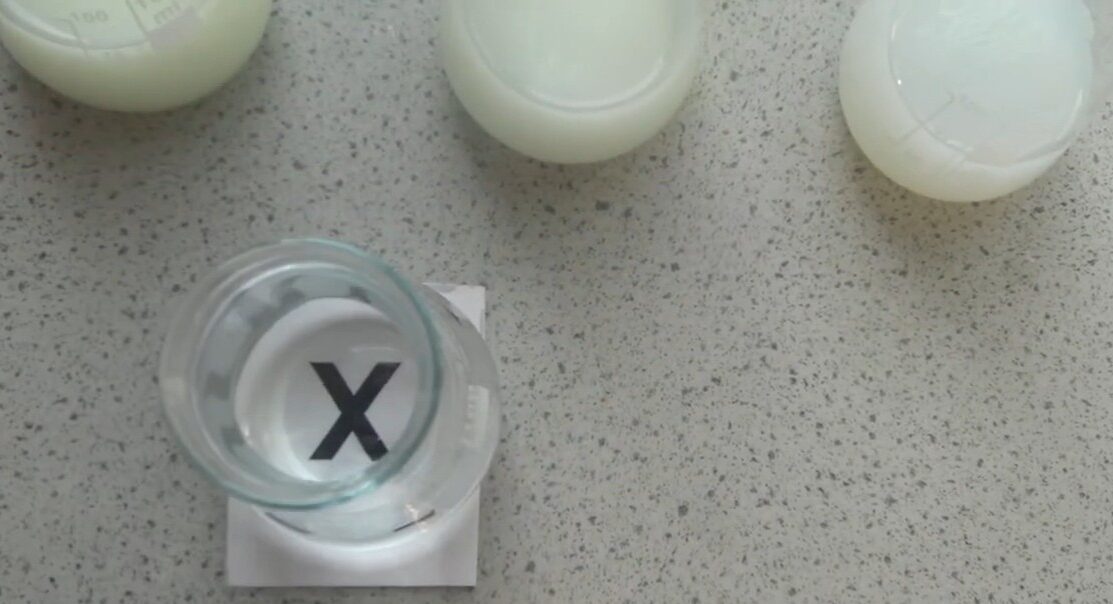
2 thoughts on “Sodium Thiosulfate and Hydrochloric Acid Experiment”